Search Thermo Fisher Scientific
Invitrogen
IL-10 Monoclonal Antibody (JES5-16E3), Biotin, Functional Grade, eBioscience™
FIGURE: 1 / 27
IL-10 Antibody (36-7101-85) in Flow
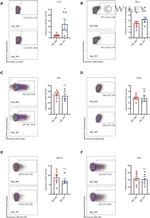
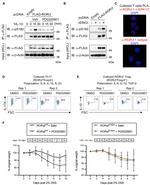
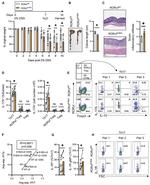
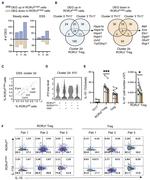
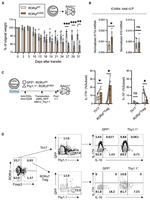
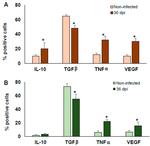
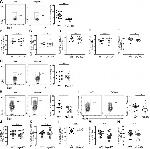
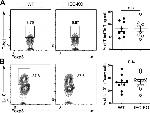
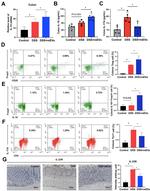

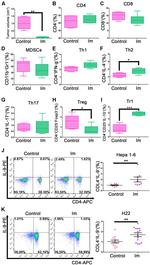


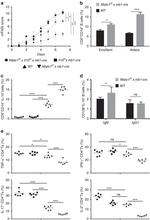
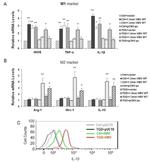
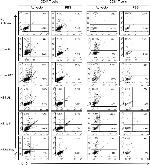
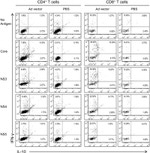
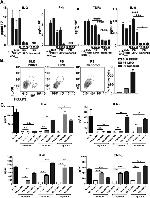
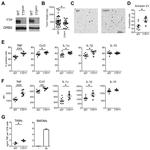


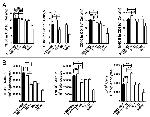
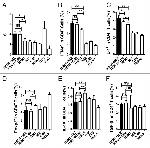
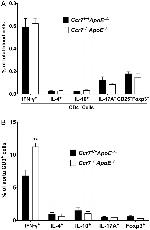
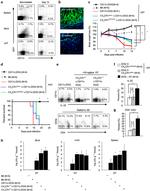


Product Details
36-7101-85
Species Reactivity
Published species
Host/Isotype
Class
Type
Clone
Conjugate
Form
Concentration
Purification
Storage buffer
Contains
Storage conditions
Shipping conditions
RRID
Product Specific Information
Description: The JES5-16E3 antibody reacts with mouse interleukin-10 (IL-10). Mouse IL-10 is an ~18 kDa factor also known as Cytokine Synthesis Inhibitory Factor (CSIF). In the mouse, Th2 cells, B1 cells, macrophages, and keratinocytes are the major cell subsets that produce IL-10. IL-10 inhibits synthesis of Th1 cytokines and proliferation of T cells, and acts as a costimulatory signal for mast cells, developing thymocytes and the Th2 response.
Applications Reported: The Functional Grade Biotin anti-mouse IL-10 antibody (clone JES5-16E3) has been reported for use as the in vivo capture antibody for the In Vivo Cytokine Capture Assay (IVCCA). The IVCCA facilitates measurement of cytokines in serum by increasing their in vivo half lives dramatically. This increases the sensitivity of measurement of in vivo cytokine production 30- to 1000- fold.
For detailed methodology in this application, please refer to Finkelman, F., S. Morris, T. Orekhova, and D. Sehy. 2003. The In Vivo Cytokine Capture Assay for measurement of cytokine production in the mouse. In Current Protocols in Immunology. Unit 6.28. J. Coligan, A. Kruisbeek, D. Margulies, E. Shevach, and W. Strober, eds. John Wiley and Sons, New York.
Applications Tested: The Functional Grade Biotin JES5-16E3 antibody has been tested by LAL assay to ensure it is free of endotoxin, and has been tested as the detection antibody in a sandwich ELISA for analysis of mouse IL-10 in combination with the purified JES5-2A5 (14-7102) antibody for capture and recombinant mouse IL-10 (14-8101) as the standard.A suitable range of concentrations of the FG Biotin JES5-16E3 antibody for ELISA detection is 0.5-2 µg/mL. A standard curve consisting of doubling dilutions of the recombinant standard over the range of 4000 pg/mL - 30 pg/mL should be included in each ELISA plate.
Endotoxin: Less than 0.05 ng/µg antibody as determined by the LAL assay.
Storage and handling: Use in a sterile environment.
Target Information
IL-10 encodes a protein that acts as a cytokine and is primarily produced by monocytes, with some production by lymphocytes. This cytokine has various effects on immunoregulation and inflammation, including down-regulating the expression of Th1 cytokines, MHC class II Ags, and costimulatory molecules on macrophages. It also enhances B cell survival, proliferation, and antibody production. Additionally, IL-10 can block NF-kappa B activity and is involved in the regulation of the JAK-STAT signaling pathway. Knockout studies in mice have suggested that this cytokine is an essential immunoregulator in the intestinal tract. Mutations in this gene have been associated with an increased susceptibility to HIV-1 infection and rheumatoid arthritis. Diseases associated with IL10 include Graft-Versus-Host Disease and Human Immunodeficiency Virus Type 1.
For Research Use Only. Not for use in diagnostic procedures. Not for resale without express authorization.
Bioinformatics
Protein Aliases: CSIF; Cytokine synthesis inhibitory factor; H-IL-10; il 10; IL-10; ILN; Interleukin; Interleukin-10; Interleukin10; MGC126450; MGC126451; RP11-262N9.1
Gene Aliases: CSIF; Il-10; Il10
UniProt ID: (Mouse) P18893
Entrez Gene ID: (Mouse) 16153

Performance Guarantee
If an Invitrogen™ antibody doesn't perform as described on our website or datasheet,we'll replace the product at no cost to you, or provide you with a credit for a future purchase.*
Learn more
We're here to help
Get expert recommendations for common problems or connect directly with an on staff expert for technical assistance related to applications, equipment and general product use.
Contact tech support
